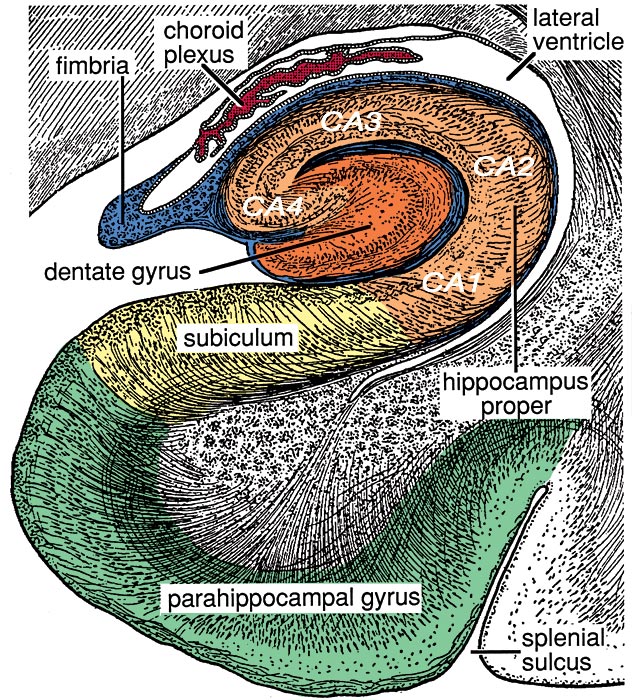Hippocampal Formation
CLOSE

Figure 18—37. Schematic drawing of the hippocampal formation, tucked deep to and continuous with the parahippocampal gyrus. The plane of section is debatable, it could be a dorsal plane section from the right cerebral hemisphere (rostral toward the left and medial toward the bottom). The hippocampal formation consists of the dentate gyrus (dark orange), hippocampus proper (pale orange), and subiculum (yellow). The latter is continuous with entorhinal cortex covering the parahippocampal gyrus (green). The hippocampus proper (cornu ammonis) may be divided into four regions (CA1…CA4). Output axons (blue) from the hippocampal formation run superficially in the alveus and then in the fimbria. The subiculum conveys reciprocal connections between the hippocampus and entorhinal cortex. The hippocampus forms a partial wall of the lateral ventricle, which contains a choroid plexus. (Modified from Ranson, S.W. and Clark S.L. 1959 Anatomy of the Nervous System, 10th ed. Philadelphia, W. B. Saunders Co.)
Go Top